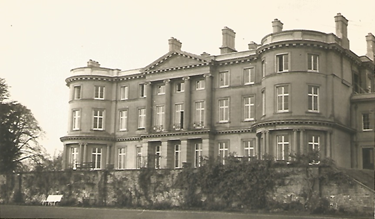A Visitor to Caerwent in 1786
THE REVD SAMUEL SEYER, A VISITOR TO CAERWENT IN 1786
 |
| An antique plan of Venta Silurum or Caerwent’ drawn by Thomas Morrice |
When the Bristol clergyman and schoolmaster Revd. Samuel Seyer visited Monmouthshire in 1786, he was ‘repeatedly assured’ at Chepstow ‘that there was nothing to see at Caerwent and that it was not even mentioned in the guidebook’. When he got there, he found,
‘a poor miserable village, containing the parish church, one large farmhouse, three alehouses, three shops and about a dozen mean houses within the walls and about half a dozen against the walls outside’.
Despite this unpromising start, his account of the Roman town, his sketch map and detailed account of the Roman walls as they then existed, precede Coxe’s better known account and his excellent plan of Caerwent (above) by the surveyor Thomas Morrice by almost twenty years. Seyer saw a Roman mosaic which had been preserved under a protective shed and described Roman roads leading from Caerwent to Sudbrook and Usk, but these had recently been largely destroyed to repair the modern roads. His account was reprinted by Charles Roach Smith in 1848, in his description of his visit to Caerleon and Caerwent and his meeting with our founder John Edward Lee. (See Charles Roach Smith, ‘Notes on Caerwent and Caerleon’. Journal of the British Archaeological Association IV 1848, 246-264.)
In Seyer’s time, local people had a profitable trade in selling Roman coins to visitors. (A picture of him holding a coin can be accessed below.)
‘Great quantities of Roman coins have been found here and are found every day after opening fresh earth. All which I saw (near one hundred) were Imperial … I bought two very perfect copper pieces of Trajan weighing about a penny each, for half a crown and among some smaller Roman ones, I bought a silver penny of William the Conqueror and another of one of the Edwards.’
From Caerwent, Charles Roach Smith went on to Caerleon. Like Tennyson eight years later, he stayed at the Hanbury Arms, where the landlady remembered the visits of Coxe, Colt Hoare and the other early travellers nearly fifty years before. On summer mornings Coxe and Colt Hoare would set off on their travels at four o’clock in the morning. Roach Smith called on Lee and they inspected Lee’s rescue excavation of the extra mural Roman bath building which had turned up during landscaping at the Mynde. Several Roman inscriptions had recently turned up and Lee was planning to discuss these with the Caerleon Antiquarian Association ‘an institution recently founded by Mr Lee and his friends’. Like Lee, Smith was not a wealthy amateur, but ‘in business’ - a London chemist, who had rescued much Roman and Medieval material from development sites in the City of London, and like Lee, had founded a museum (in his case a private one). The two men would have had much in common. After Roach Smith’s death, his collections passed to the British Museum, where they form the foundation of its Romano British collections.
Jeremy Knight
Further Information.
1. This article is based on William Seyer’s visit to Caerwent reprinted in Charles Roach Smith, ‘Notes on Caerwent and Caerleon’. Journal of the British Archaeological Association IV 1848, 246-264.) Charles Roach Smith (1806--1890) was a notable amateur archaeologist and was elected a fellow of the Society of Antiquaries of London (1836), and the London Numismatic Society (1837). Roach Smith was a founding member of the British Archaeological Association (1843).
2. For Samuel Seyer’s subsequent comments on Caerwent see
Samuel Seyer, 'Memoirs historical and topographical of Bristol', Vol. One, 1757-1831. Chapter II, p. 130. Click on Link and scroll down.
3. For an engraving of William Seyer holding a coin see © National Portrait Gallery, London, NPG D8923, by William Walker, stipple engraving, (1824). Click on
4. For Edward Lee the founder of the Monmouthshire Antiquarian Association see
Gwenllian V. Jones, ‘John Edward Lee, a Monmouthshire Antiquary’, The Monmouthshire Antiquary, Vol., XIII (1997).
Gwenllian V. Jones, ‘John Edward Lee and Antiquarianism in Nineteenth-Century Caerleon’, The Monmouthshire Antiquary, Vol., XVII (2001).
5. For William Coxe see, Historical Tour in Monmouthshire, Vol. 1, Chapter 4 pp.24-29, 1995 Merton Priory Press Ltd. (original publication 1801) The book has an introduction by Jeremy Knight. The book is the result of three tours by the author William Coxe. On the first, in 1798, he was accompanied by Sir Richard Colt Hoare who provided some of the illustrations for the book and there were then two further tours on his own, in the spring and autumn of 1799. Sir Richard Colt Hoare (1758-1838), was a renowned antiquarian in his own right.
6. See also John Newman, The Buildings of Wales: Gwent/Monmouthshire, p.82 and 145-152
7. Coflein: Caerwent Roman City; Venta Silurum Click on Link to access information from Coflein.
To open online links, click and open in new window.


